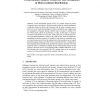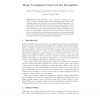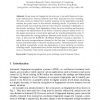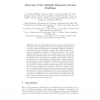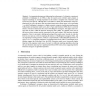ICB
2009
Springer
14 years 5 months ago
2009
Springer
Linear discriminant analysis (LDA) is a popular method in pattern recognition and is equivalent to Bayesian method when the sample distributions of different classes are obey to t...
ICB
2009
Springer
14 years 5 months ago
2009
Springer
Minutiae-based representation is the most widely adopted fingerprint representation scheme. The compactness of minutiae template has created an impression that the minutiae templa...
ICB
2009
Springer
14 years 5 months ago
2009
Springer
We propose a vector representation (called a 3D signature) for 3D face shape in biometrics applications. Elements of the vector correspond to fixed surface points in a face-centere...
ICB
2009
Springer
14 years 5 months ago
2009
Springer
We take advantage of the temporal continuity in an iris video to improve matching performance using signal-level fusion. From multiple frames of an iris video, we create a single a...
ICB
2009
Springer
14 years 5 months ago
2009
Springer
Abstract. Sweat pores on fingerprints have proven to be useful features for personal identification. Several methods have been proposed for pore matching. The state-of-the-art meth...
ICB
2009
Springer
14 years 5 months ago
2009
Springer
Abstract. State-of-the-art palmprint recognition algorithms achieve high accuracy based on component based texture analysis. However, they are still sensitive to local variations o...
ICB
2009
Springer
14 years 5 months ago
2009
Springer
We propose a scalable face matching algorithm capable of dealing with faces subject to several concurrent and uncontrolled factors, such as variations in pose, expression, illumina...
ICB
2009
Springer
14 years 5 months ago
2009
Springer
The goal of the Multiple Biometrics Grand Challenge (MBGC) is to improve the performance of face and iris recognition technology from biometric samples acquired under unconstrained...
ICB
2009
Springer
14 years 5 months ago
2009
Springer
ICB
2009
Springer
14 years 5 months ago
2009
Springer
This paper concentrates on the comparisons of systems that are used for the recognition of expressions generated by six upper face action units (AU s) by using Facial Action Coding...
